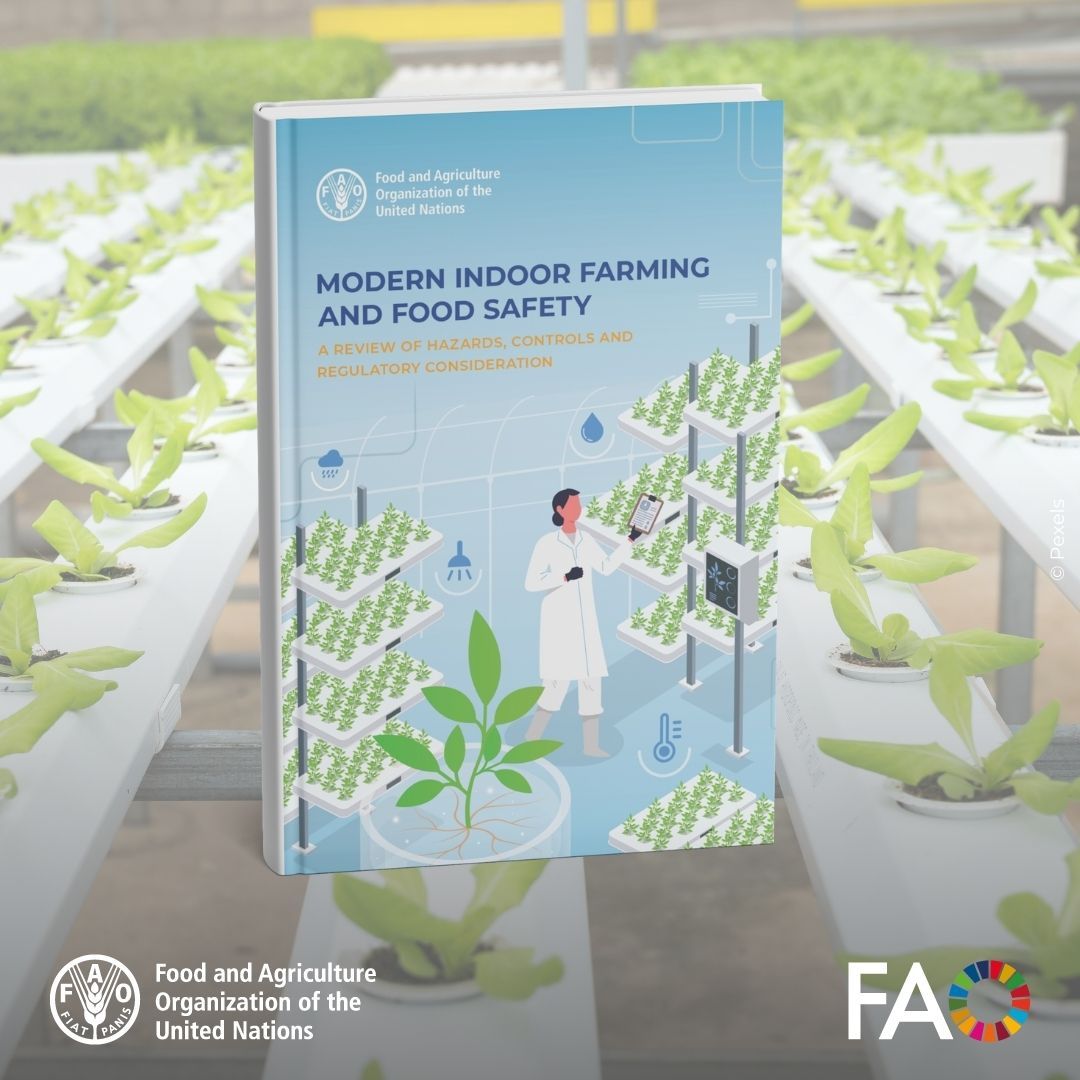A new FAO publication titled Modern indoor farming and food safety – A review of hazards, controls and regulatory consideration provides the first global review of food safety implications in modern indoor farming systems, including vertical farms, hydroponics, and aquaponics.
Indoor farming is often praised for benefits such as lower pesticide use, efficient resource management, and year-round local production, but the review emphasizes that food safety risks remain. Hazards like Salmonella and E. coli can enter through seeds, water, substrates, or human handling if not properly managed.
The report:
-
Maps microbiological and chemical hazards in indoor farming.
-
Identifies control measures and existing regulations.
-
Highlights research gaps and the need for risk communication among regulators, producers, and consumers.
Experts stress that while indoor farming can boost sustainable food systems, preventing hazards at the source and maintaining strict oversight are essential. Economic competitiveness with conventional crops is also critical for success.
Key Takeaway
Indoor farming has strong potential to contribute to sustainable, resilient agrifood systems, but its promise can only be realized by pairing innovation with rigorous food safety practices and regulatory frameworks.
Source: FAO
